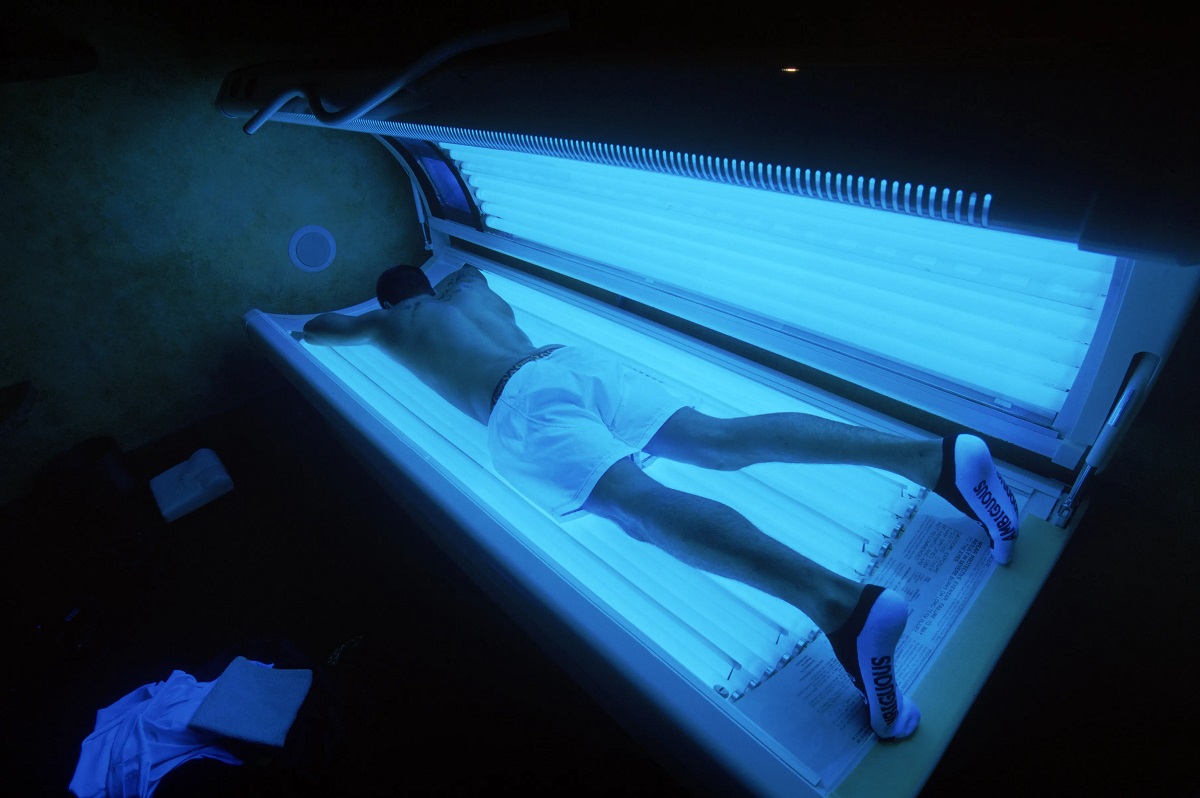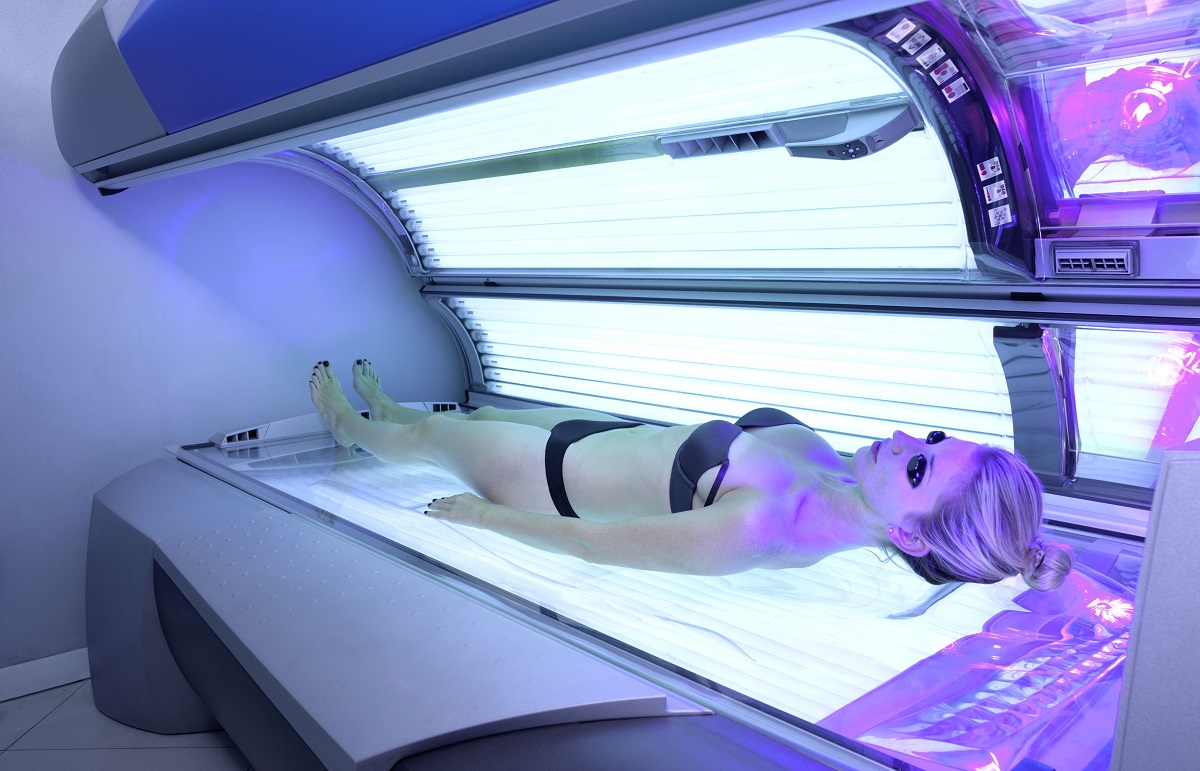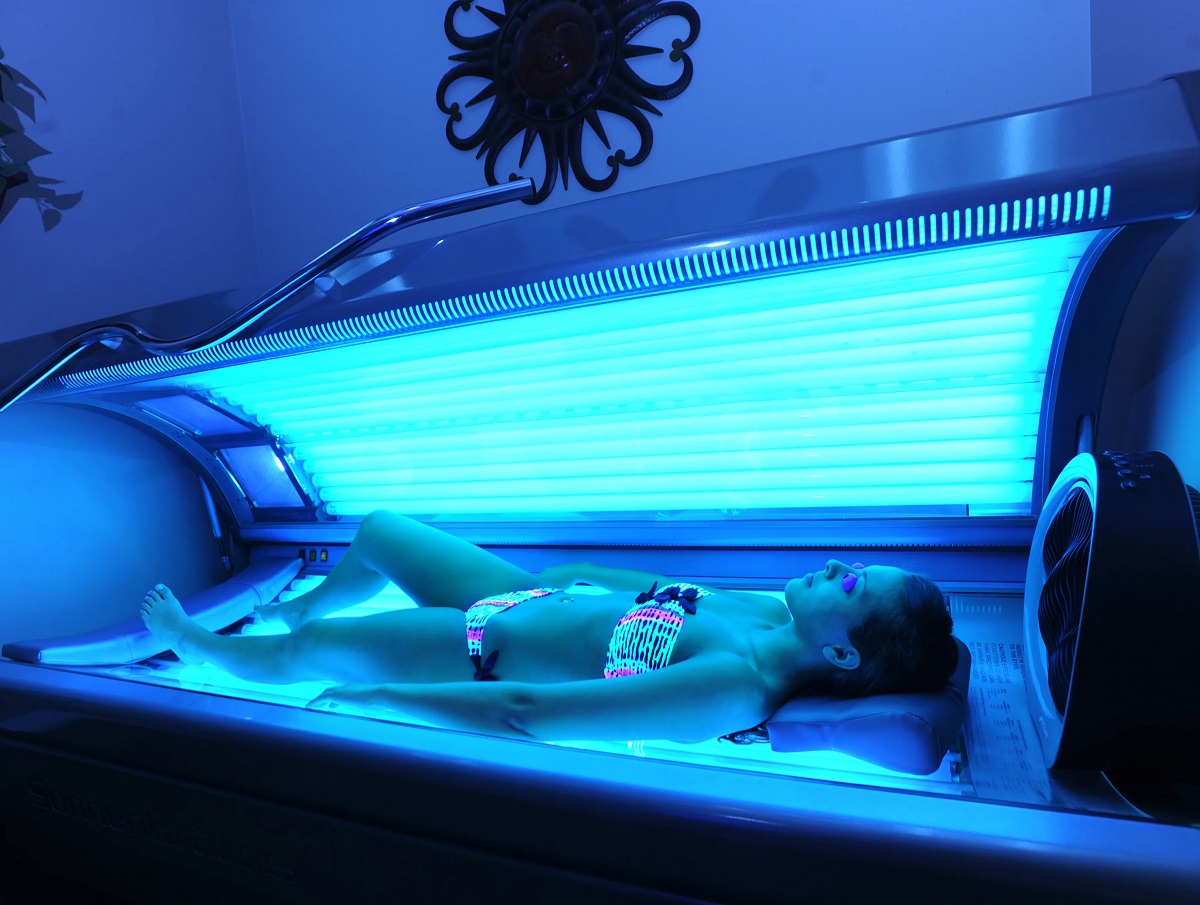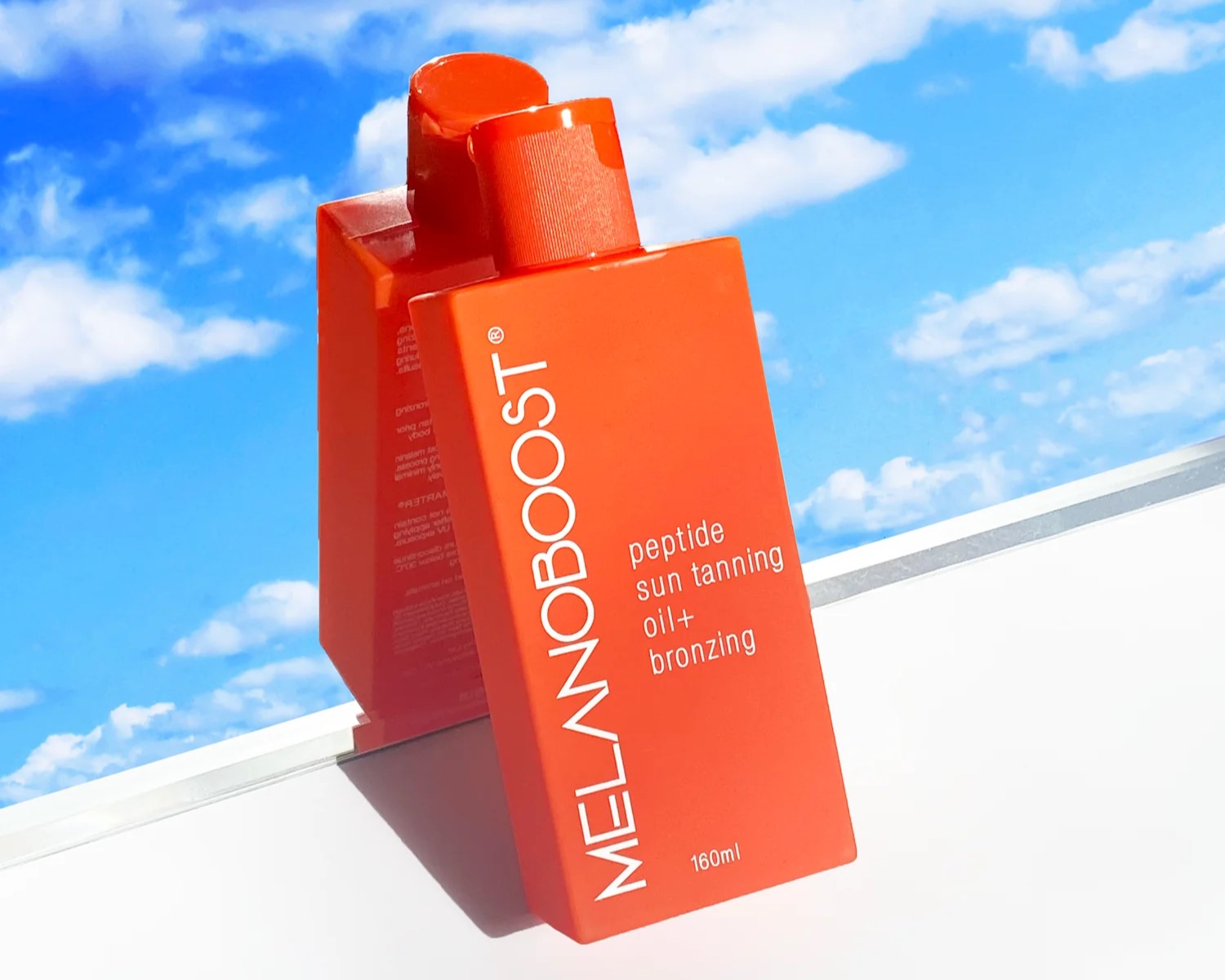Home>Furniture>Bedroom Furniture>How To Tan In A Tanning Bed


Bedroom Furniture
How To Tan In A Tanning Bed
Modified: February 18, 2024
Learn how to achieve the perfect tan in the comfort of your own home with our expert tips and advice on using tanning beds. Discover the best bedroom furniture for creating a relaxing tanning experience.
(Many of the links in this article redirect to a specific reviewed product. Your purchase of these products through affiliate links helps to generate commission for Storables.com, at no extra cost. Learn more)
Introduction
Are you looking to achieve a beautiful bronzed glow all year round? Tanning beds can be a convenient and effective solution. Whether you’re preparing for a tropical vacation or simply want to maintain a sunkissed look, tanning beds offer a controlled environment for achieving your desired tan. In this article, we will explore the ins and outs of tanning beds, from understanding how they work to proper preparation and safety measures. So, get ready to dive into the world of tanning beds and learn how to achieve that perfect, sun-kissed glow.
Key Takeaways:
- Achieve a beautiful, sun-kissed glow year-round by understanding tanning bed safety, preparation, and proper usage. Prioritize skin health, follow guidelines, and consult professionals for a safe and effective tanning experience.
- Optimize your tanning bed experience by adjusting settings, timing sessions, and using tanning lotion. Protect sensitive areas, prioritize after-tanning care, and be aware of potential risks for a vibrant and safe tan.
Read more: What Is A Tanning Bed
Understanding Tanning Beds
Tanning beds, also known as sunbeds or indoor tanning beds, utilize specially designed lamps that emit ultraviolet (UV) radiation to mimic the effects of natural sunlight. These beds provide a controlled environment where individuals can expose their bodies to UV rays in order to achieve a tan.
There are two types of UV rays emitted by tanning beds: UVA and UVB. UVA rays are responsible for the immediate tanning effect, while UVB rays contribute to the delayed tanning process. Some tanning beds also emit UVC rays, but these rays are filtered out to ensure safety.
When using a tanning bed, it’s important to understand your skin type and its sensitivity to UV rays. There are six different skin types, ranging from fair to dark, and each type has different levels of tolerance for UV exposure. Knowing your skin type will help you determine the appropriate tanning bed session duration and intensity.
It’s worth mentioning that while tanning beds provide a convenient way to achieve a tan, they should be used with caution. Overexposure to UV radiation can lead to sunburn, premature aging, and even an increased risk of skin cancer. It’s essential to follow safety guidelines and take necessary precautions when using tanning beds.
Now that we have a basic understanding of tanning beds, let’s move on to the next step: preparing for your tanning session.
Preparing for Tanning
Before you hop into a tanning bed, there are a few important steps to take to ensure the best tanning experience and minimize potential risks. Here’s how to prepare:
- Cleanse and exfoliate your skin: Start by cleansing your skin thoroughly to remove any dirt, oils, or lotions that may create a barrier and interfere with the tanning process. Next, gently exfoliate your skin to remove any dead cells and ensure an even tan. Pay extra attention to rough areas like elbows and knees.
- Avoid moisturizers and perfumes: Avoid applying any moisturizers, lotions, or perfumes prior to your tanning session. These products can create a barrier on the skin and interfere with the tanning process. Opt for a gentle, fragrance-free cleanser instead.
- Remove makeup and jewelry: If you wear makeup, make sure to remove it before tanning. The metal in jewelry can reflect UV rays and cause uneven tanning or skin irritation. It’s best to leave your jewelry off during the tanning session.
- Choose appropriate tanning attire: Selecting the right tanning attire can make a difference in achieving an even tan. Opt for minimal clothing to expose more skin, such as a bikini or swimsuit, to ensure an even distribution of UV rays.
- Protect your eyes: Use protective eyewear specifically designed for tanning beds. Regular sunglasses are not sufficient to block UV rays and can cause damage to your eyes. Proper eye protection is a must to safeguard your vision.
- Consult a healthcare professional: If you have any underlying medical conditions, it’s always a good idea to consult with a healthcare professional before using a tanning bed. They can provide personalized advice based on your specific health needs.
By following these preparation tips, you’ll be ready to step into the tanning bed with confidence, knowing that your skin is primed for a beautiful tan. Next, let’s delve into the safety measures you should keep in mind during your tanning session.
Safety Measures
While tanning beds can be a great way to achieve a tan, it’s crucial to prioritize safety throughout the process. Here are some important safety measures to keep in mind:
- Limit your exposure: Start with shorter tanning sessions and gradually increase the time as your skin develops a tolerance to UV rays. It’s recommended to start with sessions of 5-10 minutes and never exceed the recommended time for your skin type.
- Follow manufacturer guidelines: Each tanning bed comes with specific instructions and guidelines provided by the manufacturer. Be sure to read and understand these guidelines to ensure safe and proper use of the tanning bed.
- Use a timer: Always use the built-in timer or external timer to keep track of your tanning session. This will help you stick to the recommended exposure time and prevent overexposure.
- Protect your lips and nipples: Lips and nipples are particularly sensitive to UV radiation. You can use lip balm with SPF and cover your nipples with small adhesive patches designed for tanning to protect these sensitive areas.
- Moisturize after tanning: After each tanning session, moisturize your skin to keep it hydrated. This will help maintain your tan and prevent dryness or peeling. Opt for a moisturizer that is specifically formulated for post-tanning use.
- Stay hydrated: It’s important to stay hydrated before, during, and after your tanning session. Drink plenty of water to keep your body hydrated and maintain optimal skin health.
- Take breaks between sessions: Allow your skin to rest between tanning sessions. Over-exposure to UV rays can damage the skin, so it’s recommended to have at least 48 hours of rest between each session.
- Protect your eyes: Remember to always wear protective eyewear specifically designed for tanning beds. This will shield your eyes from potentially harmful UV rays and reduce the risk of eye damage.
By following these safety measures, you can enjoy the benefits of tanning beds while minimizing the potential risks to your skin’s health. Now that you know how to stay safe, it’s time to learn about setting the tanning bed for a personalized and effective tanning experience.
Setting the Tanning Bed
Setting the tanning bed properly is crucial for achieving an effective tan while minimizing the risk of overexposure. Here are some key steps to follow when setting the tanning bed:
- Adjust the bed position: Start by adjusting the bed position to a comfortable level. Most tanning beds have multiple settings to accommodate different body positions. Find a position that allows for even exposure to UV rays across your entire body.
- Select the right lamp intensity: Tanning beds usually have adjustable lamp intensity settings. For beginners or those with fair skin, it’s recommended to start with lower intensity levels and gradually increase as your skin develops a tolerance to UV rays.
- Check the lamp condition: Inspect the condition of the lamps before starting your tanning session. Ensure that they are functioning properly and evenly distributed across the bed. If you notice any damaged or malfunctioning lamps, contact the tanning salon staff to address the issue.
- Position the facial tanners: Many tanning beds have separate facial tanners equipped with UV lamps specifically designed for the face. Properly position these facial tanners to ensure even exposure to the delicate skin on your face and neck.
- Use reflector panels: Some tanning beds come with reflector panels that help enhance the distribution of UV rays. If your tanning bed has these panels, make sure they are properly positioned to optimize tanning results.
- Set the ventilation system: Tanning beds often have built-in ventilation systems to control temperature and maintain a comfortable environment during the session. Ensure that the ventilation system is functioning properly and set it at a level that keeps you cool and prevents overheating.
By following these steps and adjusting the tanning bed settings to suit your needs, you can create an optimal tanning environment that promotes an even and long-lasting tan. Next, let’s move on to the importance of timing your tanning session.
Read more: What To Wear In Tanning Bed
Timing Your Tanning Session
Timing your tanning session is essential to ensure you achieve a desired tan without risking overexposure to UV rays. Here are some important factors to consider when determining the ideal tanning session duration:
- Skin type: Your skin type plays a significant role in determining the appropriate tanning time. Darker skin types generally have a higher tolerance to UV rays and can handle longer tanning sessions compared to fair skin types. Refer to the skin type chart or consult with a tanning salon professional to determine the recommended session duration based on your specific skin type.
- Tanning bed intensity: The lamp intensity setting on the tanning bed affects how quickly you tan. Lower intensity settings require longer exposure times, while higher intensity settings result in a quicker tan. Adjust the duration of your tanning session based on the lamp intensity to achieve the desired tan without overexposure.
- Tanning goals: Consider your tanning goals when determining the session duration. If you’re looking for a subtle, natural-looking tan, shorter sessions may be sufficient. However, if you want a deeper, more noticeable tan, longer sessions may be required. Gradually increase the session duration as you progress towards your desired tan.
- Tanning schedule: It’s important to establish a tanning schedule that allows your skin to rest and recover between sessions. Having at least 48 hours between sessions gives your skin time to regenerate and helps minimize the risk of overexposure and skin damage.
- Personal comfort: Pay attention to your body’s response during tanning sessions. If you experience discomfort, redness, or any signs of skin irritation, it may be an indication that the session duration is too long. Adjust the duration accordingly to ensure comfort and avoid potential skin damage.
Remember, patience is key when tanning. It’s better to gradually build your tan over time rather than rushing the process and risking sunburn or other skin damage. Listen to your body, follow the recommended guidelines, and adjust the tanning session duration to achieve the best results for your skin. Now let’s explore the importance of using tanning lotion.
Always wear protective eyewear when tanning in a tanning bed to prevent damage to your eyes from the UV rays.
Applying Tanning Lotion
Using tanning lotion during your tanning session can help enhance your tan and keep your skin moisturized. Here are some tips for effectively applying tanning lotion:
- Choose the right tanning lotion: Select a tanning lotion that is specifically formulated for indoor tanning. These lotions typically contain ingredients that can accelerate the tanning process and provide hydration to the skin. Look for lotions with bronzers or accelerators to maximize your tanning results.
- Exfoliate before applying lotion: Prior to applying tanning lotion, exfoliate your skin to remove any dead cells and create a smooth canvas for the lotion. This will allow the tanning lotion to be absorbed more effectively and provide an even tan.
- Apply lotion evenly: Start by applying a small amount of tanning lotion to your hands and then massage it onto your skin in circular motions. Be sure to cover all exposed areas, including arms, legs, torso, and back. Take extra care around areas with thick skin, such as elbows and knees, to ensure even application.
- Avoid over-application: While it’s important to apply enough lotion to cover your skin, avoid over-applying. Excess lotion can clog pores and lead to skin irritation or an uneven tan. Start with a small amount and add more if needed.
- Pay attention to drying time: Allow the tanning lotion to fully dry before getting into the tanning bed. This will prevent the lotion from streaking or transferring onto the tanning bed surface, ensuring a more even tanning result. Follow the instructions provided by the manufacturer for the recommended drying time.
- Moisturize after tanning: After your tanning session, moisturize your skin with a post-tanning lotion or a moisturizer specifically designed for use after tanning. This will help prolong your tan and keep your skin hydrated, preventing dryness and peeling.
Using tanning lotion can not only enhance your tanning results but also provide nourishment and hydration to your skin. By following these tips and incorporating tanning lotion into your tanning routine, you can achieve a more vibrant and long-lasting tan. Next, let’s talk about protecting sensitive areas during tanning.
Protecting Sensitive Areas
During tanning sessions, certain areas of our bodies can be more sensitive to UV exposure. To ensure the safety and well-being of these areas, it’s important to take extra precautions and protect them properly. Here are some tips for safeguarding sensitive areas during tanning:
- Lips: Protect your lips from UV radiation by applying a lip balm with SPF (sun protection factor) before entering the tanning bed. SPF lip balms help shield the delicate skin of your lips from potential damage caused by UV rays.
- Nipples: When tanning, the sensitive skin on your nipples can also be vulnerable to burning or discomfort. To protect them, you can use small adhesive patches specifically designed for tanning. These patches shield the nipples from direct UV exposure and minimize the risk of irritation.
- Eyelids: Your eyelids are thin and delicate, making them susceptible to UV damage. Proper eye protection is crucial during tanning sessions. Wear specialized goggles or eye shields designed for indoor tanning to protect your eyes and the sensitive skin around them.
- Moles and Birthmarks: Moles and birthmarks are areas where the skin has a higher concentration of pigment cells. It’s important to protect these areas from excessive UV exposure to reduce the risk of skin damage or potential changes in the appearance of the mole or birthmark. Cover them with a small piece of fabric or use a specialized adhesive bandage designed for tanning.
- Scars: If you have scars, they may react differently to UV exposure. It is best to consult with a healthcare professional or dermatologist before tanning if you have any concerns about how your scars may react to UV radiation.
- Face and neck: The skin on your face and neck is generally more sensitive and can be prone to irritation. Apply a facial tanning lotion that is specifically formulated for the delicate skin on your face. This will provide the necessary hydration and protection during tanning.
By taking these precautions to protect sensitive areas, you can ensure a safer and more comfortable tanning experience. Remember, it’s always better to be cautious and prioritize the health of your skin. Now that you know how to protect sensitive areas, let’s discuss the importance of after-tanning care.
After-Tanning Care
Caring for your skin after a tanning session is just as important as the session itself. Proper after-tanning care can help maintain your tan, keep your skin hydrated, and minimize the risk of potential damage. Here are some essential tips for post-tanning care:
- Moisturize: After tanning, it’s crucial to moisturize your skin to prevent dryness and peeling. Choose a moisturizer specifically formulated for post-tanning use, as these products often contain ingredients that help prolong your tan and keep your skin hydrated. Apply the moisturizer liberally to your entire body, paying extra attention to areas that are prone to dryness.
- Avoid hot showers and excessive sweating: Avoid taking hot showers or engaging in activities that cause excessive sweating immediately after tanning. Hot water and sweat can dehydrate your skin and potentially fade your tan. Instead, opt for lukewarm water and pat your skin dry gently with a towel.
- Avoid exfoliation: While regular exfoliation is beneficial for maintaining healthy skin, avoid exfoliating immediately after tanning. Exfoliation can potentially remove the top layer of tan and result in an uneven fade. Wait at least 24 hours before resuming your exfoliation routine.
- Stay hydrated: Hydration is crucial for maintaining healthy skin. Drink plenty of water after tanning to ensure your body is adequately hydrated. This will help extend the life of your tan and promote overall skin health.
- Avoid tight clothing: While your tan is developing and in the hours following your tanning session, try to avoid wearing tight clothing that may rub against your skin. Loose and breathable clothing will help your skin breathe and minimize the risk of tan lines or uneven fading.
- Protect your tan: If you plan on spending time outdoors following your tanning session, remember to wear sunscreen. Despite your tan, your skin is still vulnerable to UV radiation. Apply a broad-spectrum sunscreen with a high SPF to protect your skin and prevent sunburn.
By following these after-tanning care tips, you can prolong the life of your tan, maintain healthy and hydrated skin, and ensure the best possible results. Remember that proper care and maintenance are essential for achieving a long-lasting and beautiful tan. Now, let’s take a closer look at the risks and precautions associated with tanning bed usage.
Read more: How To Use A Tanning Bed Safely
Risks and Precautions
While tanning beds can provide a convenient way to achieve a tan, it’s important to be aware of the potential risks and take necessary precautions. Here are some key risks to consider and precautions to follow when using tanning beds:
- Increased risk of skin damage: Overexposure to UV radiation from tanning beds can lead to various skin problems, including sunburn, premature aging, and an increased risk of skin cancer. It’s important to limit your exposure and follow recommended session durations based on your skin type.
- Skin sensitivity: Some individuals may have sensitive skin that is more prone to burning or irritation. If you have sensitive skin or a history of skin issues, it’s recommended to consult with a dermatologist before using a tanning bed.
- Eye damage: UV rays emitted by tanning beds can be harmful to your eyes. Proper eye protection in the form of specialized goggles or eye shields is crucial to safeguard against eye damage. Regular sunglasses are not sufficient to block UV rays.
- Medication interactions: Certain medications, such as antibiotics, acne medications, and some birth control pills, can increase the skin’s sensitivity to UV radiation. Consult with a healthcare professional or pharmacist to understand how your medications may interact with tanning bed usage.
- Age restrictions: Tanning beds are not recommended for individuals under the age of 18 due to the increased sensitivity of their developing skin. Adhere to the age restrictions imposed by tanning salons and always prioritize the well-being of younger individuals.
- Pregnancy precautions: Pregnant women should avoid using tanning beds due to the potential risks associated with UV exposure. UV radiation can penetrate the skin and potentially harm the developing fetus. It’s best to consult with a healthcare professional regarding safe tanning alternatives during pregnancy.
- Regular skin check-ups: It’s important to perform regular skin examinations and monitor any changes or irregularities in moles or spots. If you notice any changes, such as changes in size, shape, color, or texture, consult with a dermatologist for further evaluation.
By understanding and addressing these risks, and by following the necessary precautions, you can minimize potential harm and enjoy a safer tanning experience. Prioritize your skin’s health and well-being at all times. Let’s now conclude our comprehensive guide to tanning beds.
Conclusion
Tanning beds can provide a convenient and controlled environment for achieving a beautiful tan, but it’s important to approach their usage with caution and prioritize safety. Understanding how tanning beds work, properly preparing for sessions, and following safety measures are key to optimizing your tanning experience. Remember to adjust the tanning bed settings, time your sessions appropriately based on your skin type, and apply tanning lotion for enhanced results.
Protecting sensitive areas, such as the lips, nipples, and eyes, is crucial to prevent discomfort or potential damage. After-tanning care, including moisturizing and staying hydrated, helps prolong your tan and maintain healthy skin. Additionally, being aware of the risks associated with tanning bed usage, such as the increased risk of skin damage and eye injuries, allows you to take necessary precautions and prioritize your well-being.
Always consult with healthcare professionals or dermatologists if you have any concerns about the effects of tanning beds on your health, especially if you have sensitive skin, are taking medications, are pregnant, or have a history of skin issues. Regular skin examinations are essential for detecting and addressing any changes or irregularities in moles or spots.
By combining knowledge, safety measures, and proper care, you can enjoy the benefits of tanning beds while minimizing potential risks. Remember to prioritize the health of your skin and approach indoor tanning responsibly. Now, with this comprehensive guide in hand, you are ready to achieve that perfect, sun-kissed glow all year round.
Frequently Asked Questions about How To Tan In A Tanning Bed
Was this page helpful?
At Storables.com, we guarantee accurate and reliable information. Our content, validated by Expert Board Contributors, is crafted following stringent Editorial Policies. We're committed to providing you with well-researched, expert-backed insights for all your informational needs.













